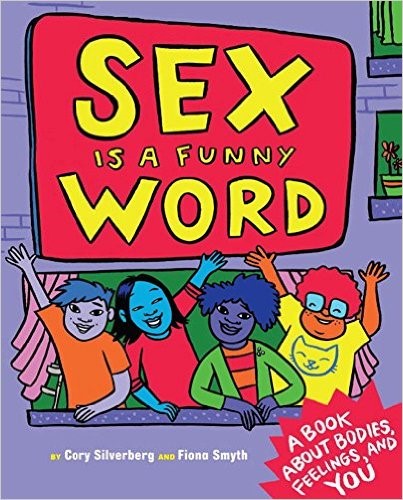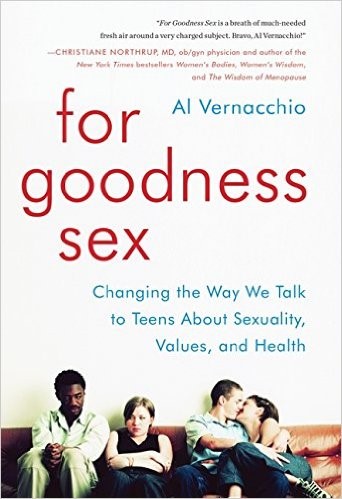Gender Identity: Being Female, Male, Transgender or Fluid
Youth
Everyone has a gender identity—a feeling or sense of being male, female or somewhere in between. Sometimes people’s gender identity matches their bodies, and sometimes it does not. A person may be born with a penis and identify as a boy or born with a vagina and identify as a girl. This person may have a gender identity that is called “cisgender.” Or someone may be born with a penis and identify as a girl or born with a vagina and identify as a boy. This person may have a gender identity that is called “transgender.”
When you share your gender identity with the world through clothing, makeup, how you talk, act and more, this is called “gender expression.” A person’s gender identity and gender expression can be different. Who someone is attracted to—their sexual orientation—is not related to gender identity and expression. Everyone has both a gender identity and a sexual orientation.
Gender roles are the unspoken rules in our society that say how girls and women as well as boys and men are supposed to behave. Sometimes gender roles can be harmful if they keep people from being who they truly are. For example, gender roles that say boys are only supposed to be tough and like sports may keep boys from expressing feelings like kindness or doing things they might enjoy, like knitting.
What’s important to remember is that people deserve to express themselves in ways that feels right for them and to be respected no matter how they identify, look or dress
FAQs
Yes, there are totally more than two genders. Some people identify as one gender that is not male or female, some identify as more than one gender, and some people don’t identify as any gender.
It’s okay if you can’t identify a person’s gender when you first meet. It’s more important not to judge someone based on the gender that person uses to identify themselves.
We usually assume people’s gender identity based on how they look or dress, but some people’s gender identity may not match how they look or dress. In some situations, when you’re not sure how someone identifies, it’s okay to say, “I want to be respectful of how you identify, so could you tell me which pronoun you prefer I use?” This gives the person an opportunity to tell you their preferred pronoun (he, she or another word).
Lots of people have qualities that are associated with a different gender. If you feel like your gender identity does not fit neatly into a boy or girl category, that’s okay. You may choose to dress or style your hair in a way that matches how you feel. As you figure out what feels right for you, seek the support of a trusted adult or friend, who are often extremely helpful!
If you feel like your body does not match how you feel inside, then you should definitely talk to an adult you can trust. People who feel like their bodies do not match how they feel inside may identify as transgender or trans. You can get help figuring out how to have what you feel inside reflected on the outside with the help of trusted adults, like parents, counselors and doctors.
Parents
Gender identity is the feeling someone has inside about being male, female or something in between. Everyone has a gender identity. Sometimes people’s gender identity matches their bodies, and sometimes it does not. A person may be born with a penis and identify as a boy or born with a vagina and identify as a girl. This person may have a gender identity that is called “cisgender.” Or someone may be born with a penis and identify as a girl or born with a vagina and identify as a boy. This person may have a gender identity that is called “transgender.”
The term “genderqueer” is used to refer to anyone who identifies as neither male nor female, both male and female or a combination of different genders. “Genderfluid” is another identity that is similar to genderqueer. Some people experience their gender as fluid. This means they may feel like a mix of masculine and feminine qualities or feel more feminine sometimes and more masculine at other times. This is called gender fluidity, and it is not related to a person’s biological sex.
People express a sense of masculinity, femininity or something in between through their daily choices about appearance. This is called “gender expression,” and it can be influenced by how someone feels inside, family expectations, society’s expectations and other influences. Sometimes people’s gender expression matches their gender identity, and sometimes it does not. Gender expression can also change throughout people’s lives as they learn more about themselves and what masculinity and femininity mean to them and how they choose to express themselves on any given day.
Gender identity and expression don’t tell us anything about who a person is attracted to. “Sexual orientation” refers to what genders we are attracted to.
Gender roles are the societal norms that dictate the types of behaviors that are generally considered appropriate for people based on their actual or perceived gender. As parents, guardians and other trusted adults, it is important that we recognize how harmful gender roles can be if we force them on young people. For example, insisting that a boy not cry when he is hurt or sad limits his ability to express a full range of human emotions and empathize with others. Gender roles can limit young people’s ability to be who they truly are when, for example, a girl who wants to play sports is instead encouraged to be “ladylike.” When children are encouraged in subtle—and not-so subtle—ways to adhere to strict gender roles, it can cause significant anxiety, insecurity, stress and low self-esteem for both boys and girls.
With all this in mind, we can support children in shaping attitudes about gender that encourage respect for the many ways that people choose to identify and express themselves.
CONVERSATION STARTERS
There are lots of terms for gender identity, and it’s not important that you or your child memorize definitions. It is more important for children to understand that gender identity and expression are spectrums, and they don’t need to be afraid if they see someone different or if they feel different in terms of how they identify or express their gender. These conversation starters are a way to make sure your child feels comfortable asking questions and talking with you about these topics.
You can also talk with your children about cultural differences in terms of gender. A great way to start talking about these issues is learning about gender expression and how masculinity and femininity are defined in different cultures (e.g., Scottish kilts).
You could also start a conversation with your child using some of the following:
Do you think someone like Prince, who expressed his gender in lots of different ways, was teased for being both masculine and feminine? It seems like it’s not easy when someone expresses their gender in a way that people don’t understand. What do you think?
It seems like it’s not easy when someone expresses their gender in a way that people don’t understand. What do you think?
Have you ever seen someone teased for being too much like a girl or too much like a boy? How did that make you feel? What did you do?
Educators
Gender identity is the feeling someone has inside about being male, female or something in between. Everyone has a gender identity. Sometimes people’s gender identity matches their bodies, and sometimes it does not. A person may be born with a penis and identify as a boy or born with a vagina and identify as a girl. This person may have a gender identity that is called “cisgender.” Or someone may be born with a penis and identify as a girl or born with a vagina and identify as a boy. This person may have a gender identity that is called “transgender.”
The term “genderqueer” can be used to refer to anyone who identifies as neither male nor female, both male and female or a combination of different genders. Genderfluid is another identity that is similar to genderqueer. Some people experience their gender as fluid. This means they may feel like a mix of masculine and feminine qualities or feel more feminine sometimes and more masculine at other times. This is called gender fluidity, and it is not related to a person’s biological sex.
Through actions and daily choices about appearance, people express a sense of masculinity, femininity or something in between. This is called “gender expression,” and it can be influenced by how someone feels inside, family expectations, society’s expectations and other influences. Sometimes people’s gender identity matches their gender expression, and sometimes it does not. Gender expression can also change throughout people’s lives as they learn more about themselves and what masculinity and femininity mean to them.
Gender identity and expression don’t tell us anything about who a person is attracted to. “Sexual orientation” refers to what genders we are attracted to.
Gender roles are the societal norms that dictate the types of behaviors that are generally considered appropriate for people based on their actual or perceived gender. As parents, guardians and other trusted adults, it is important that we recognize how harmful gender roles can be if we force them on young people. For example, insisting that a boy not cry when he is hurt or sad limits his ability to express a full range of human emotions and empathize with others. Gender roles can limit young people’s ability to be who they truly are when, for example, a girl who wants to play sports is instead encouraged to be “ladylike.” When children are encouraged in subtle—and not-so subtle—ways to adhere to strict gender roles, it can cause significant anxiety, insecurity, stress and low self-esteem for both boys and girls.
With all this in mind, we can support children in shaping attitudes about gender that encourage respect for the many ways that people choose to identify and express themselves.
Discussion Questions
- What are some ways the characters in the video express being masculine or feminine?
- How might people express gender in not strictly feminine or masculine ways?
- What are some ways other than through dress that people express gender?
- Given what we’ve learned about gender, how might you react if you meet someone who is transgender or does not act or appear traditionally feminine or masculine?



